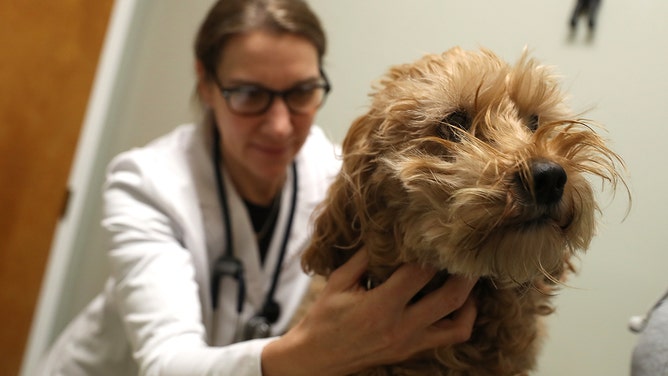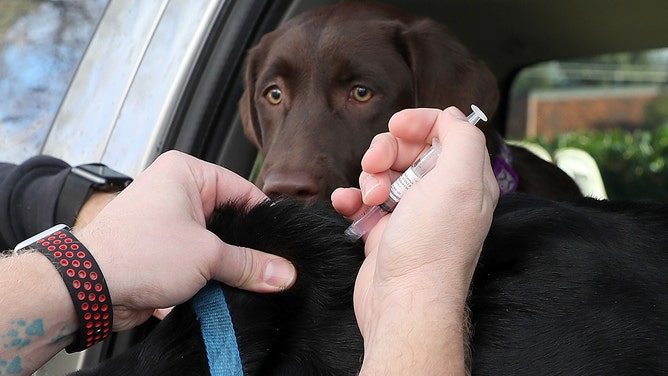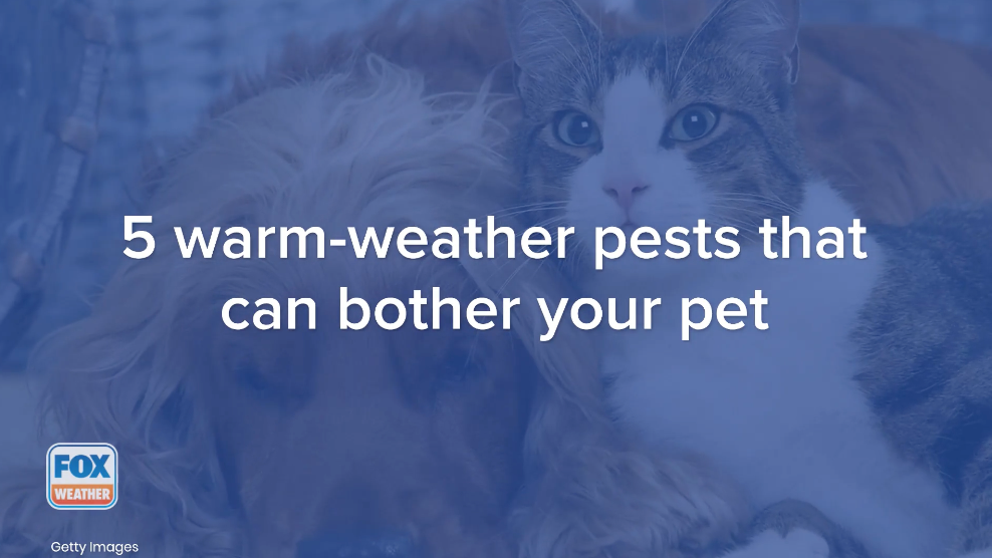Dog flu infections on the rise as canine-to-canine transmissions surge in US
Canine influenza, or dog flu, is a highly contagious viral infection affecting dogs and cats. Symptoms include fever, lethargy, sneezing, nasal and eye discharge, coughing and overall weakness.
Dog flu cases on the rise in some parts of country
Dog flu cases are on the rise in some parts of the country. If you know what to do, you can give your pup a good chance at beating it. Dr. Aziza Glass is a veterinarian with Freshpet. She joins FOX Weather to explain more.
Dog flu cases are rising in some parts of the country, but if you know what to do, you can give your pup a good chance at beating it.
Canine influenza, or dog flu, is a highly contagious viral infection affecting dogs and cats, according to the American Veterinary Medical Association.
The Centers for Disease Control and Prevention has been tracking two different influenza A dog flu viruses: H3N8 and H3N2 virus. Both strains are prevalent across the country. There is no evidence that either strain can infect humans.
Canine influenza H3N8 viruses originated in horses, spread to dogs, and can now spread between dogs, the CDC reports. Canine H3N8 influenza was first identified in Florida in 2004 in racing greyhounds.
"It's been here for a while, and it is not going anywhere," Freshpet veterinarian Dr. Aziza Glass said. "We want to make sure that you protect your pets as much as possible."
DOCTORS REMOVE LUNG FROM DOG THAT NEARLY DIED AFTER INHALING FUNGUS FOUND IN SOIL

Veternarian Dr. Linda Pirie examines a dog named Louie at Los Gatos Dog and Cat Hospital on January 25, 2018 in Los Gatos, California.
(Justin Sullivan / Getty Images)
What are signs of canine influenza in dogs?
Like kennel cough, dog flu is a respiratory disease.
"The canine flu is going to be very similar to symptoms that we have for flu ourselves," Glass said.
Symptoms include fever, lethargy, sneezing, nasal and eye discharge, coughing and overall weakness.
The severity of illness associated with canine flu in dogs, the CDC reports, can range from no signs to severe illness resulting in pneumonia and sometimes death.
Glass said when you see those symptoms, make sure that you contact your veterinarian.
"They may even be able to consult and treat your pet via telemedicine. You may not even have to leave your house," Glass added.
Dogs can get canine flu from other dogs, and humans can play a role by playing with a K-9 that is infected or touching a leash or a collar from an infected dog and then passing it to and healthy dog.
"We have to make sure that we play our part by washing our hands, using hand sanitizer, all those different things that we learned during the COVID pandemic," Glass said. "We need to also apply that for our pets and protect them."
RABIES: WHAT IS IT? HOW IS IT TRANSMITTED? DO YOU NEED A VACCINE?
Warm-weather pests that can bother your pet
There are all kinds of bugs that become more active during warmer months. Here are five that can cause problems for your pet.
Pets that go to the doggy daycare or to the park and meet other dogs are going to be in a higher risk group, according to Glass.
"If your dog has a lifestyle where it's pretty much you and Fluffy on your own all the time, then your risk factor is going to be much lower," she said. "But if you go to boarding doggie daycares or dog parks, and they're around a lot of animals, you don't know what the status is."
A year-round disease
Dog flu is considered a year-round disease. However, there can be surges during the holiday season and summer due to increased boarding from pet owners traveling or good weather when they go to dog parks more frequently.
KEEPING PETS SAFE: HOW MUCH ICE MELT IS TOXIC TO DOGS?

A dog looks on as veternarian technician Justin Jones gives a canine influenza immunization at Los Gatos Dog and Cat Hospital on January 25, 2018 in Los Gatos, California.
(Justin Sullivan / Getty Images)
"You just have to make sure that you protect your dogs by not only getting the vaccination that is available at pretty much every veterinarian general practice across the country, but also if you see the symptoms act and intervene early and then also start treatment early," Glass said.
While most dogs recover within 2 to 3 weeks, some may develop secondary bacterial infections which may lead to more severe illness and pneumonia, the CDC reports.
According to Glass, treatment includes medication, good nutrition and staying hydrated.

